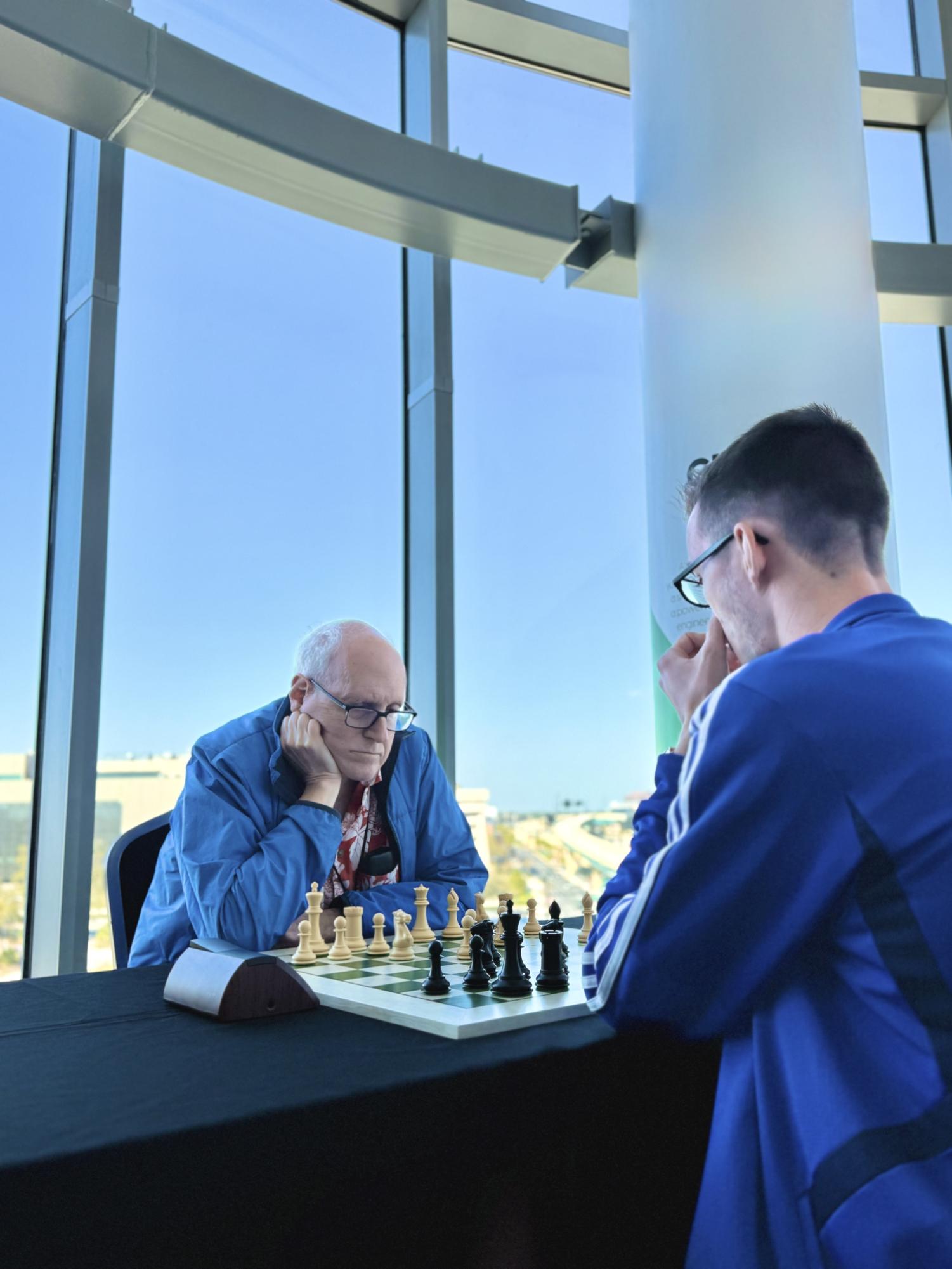Larry Kaufman was sitting at home when he received a call from an old friend who excitedly told him that their life stories were made into a TV show.
Many people are not aware that the main characters in “The Queen’s Gambit” were inspired by actual chess players in the U.S., one of whom is Grandmaster Larry Kaufman. His influence on “The Queen’s Gambit” is just one small part of an inspirational life filled with other accomplishments.
In the show, Beth Harmon, the main character, meets Harry Beltik, the local chess champion who becomes her mentor. Harmon reputedly is based on Woman Candidate Master Diana Lanni, who was the main female chess star in the New York chess scene when the “The Queen’s Gambit” book was originally written in 1982. According to Kaufman, what was portrayed in the series was similar to what happened in real life.
“Diana Lanni came to my chess club, and we became close,” Kaufman said. “We actually moved together to Miami for a few months, and I taught her chess, just like in the story. We still remain lifelong friends. So basically, Harry Beltik was based on me.”
Lanni and Kaufman were surprised when they found out that a show came out that paralleled many aspects of Lanni’s life.
“I was a bit shocked,” Kaufman said. “I noticed the similarities. When the show came out, I got a call from her, and she tells me, ‘They just made my life into a Netflix series!’”
Like the Beltik character, Kaufman was a state chess champion. He also won the American Open Championship in 1966 at the age of 19.
While Beltik’s accomplishments were limited to playing chess, Kaufman also was a pioneer in the world of technology. He first made a name for himself as a student at MIT, where he was part of a team that created the very first chess computer program to beat a human player, which was called Mac Hack. He went on to become a co-developer of the Rybka and Komodo chess engines, which were among the strongest chess programs in the world.
Some of Kaufman’s greatest achievements happened outside of the chess world. For most of the ‘70s and ‘80s, Kaufman quit chess for a significant amount of time to launch a successful investment firm. He explained how his knowledge of chess came in handy even in this arena.
“There were two famous economists in the 1970s named Black and Scholes who published a paper about how to evaluate stock options, and they won the Nobel Prize for it,” Kaufman said. “Before their paper was published, I was working on the same problem, but I came about it from this background of knowing about chess ratings. So I tried to apply what I learned about chess ratings to options, and it turned out that the formula I developed was almost the same as theirs. So because of chess ratings, I independently invented a close relative of the Nobel-Prize–winning model.”
During his break from chess, Kaufman learned shogi, a Japanese board game similar to chess. He soon became the top-ranked shogi player in the U.S., winning the North American Shogi Championship in the 1980s.
Kaufman found that playing shogi later helped with his chess skills. After playing and studying shogi for several years, Kaufman decided to re-enter the competitive chess scene.
“It took me a few weeks to get back to it,” Kaufman said. “At first, I could barely remember how to play, but soon I was back into it. My chess was much better than before, and I think it might have been because there’s a different way of thinking. In chess, I used to think too much about the result. In shogi, since there are no draws, you just try to find the best move. So I got in the habit of just trying to find the best move and not worrying about the result of the game.”
In 2008, Kaufman became a Grandmaster, the highest title in chess, when he won the World Senior Chess Championship. Notably, he accomplished this at an age when many competitive chess players have long since retired, showing that it is never too late to go after your goals.
“I peaked much later and didn’t really start to decline until much later than most chess players,” Kaufman said. “It’s normal to peak at 30 and to already be declining at 40. But in my case, my highest rating was just before I turned 50 and I became a Grandmaster at 60. It was the best result of my life, and it happened at age 60.”
With decades of notable and varied achievements under his belt, Kaufman shared the biggest lesson that he learned from his long chess career.
“I would say one of the biggest lessons is, when you play chess, you learn to play the position you’re in and not dwell on what you should have done five moves ago,” Kaufman said. “So in life, you want to play the situation that you have now and not try to re-litigate what you should have done yesterday. Just because you did something stupid yesterday doesn’t mean you have to dwell on that.”



